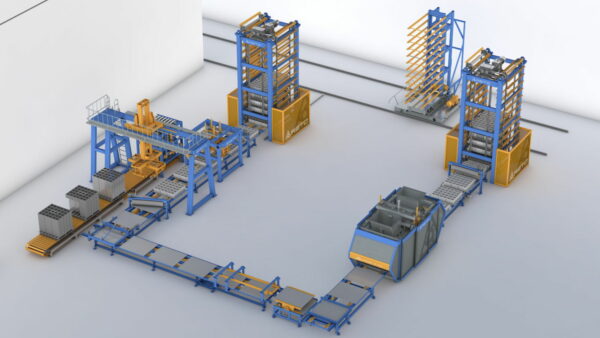The size and weight of a building block maker directly impact its portability, as they determine the ease of transportation, maneuverability, and handling of the equipment.
Here’s how the size and weight of a building block maker affect its portability:
- Size:
- Larger block makers typically have more components and larger frames, making them bulkier and more challenging to transport.
- The overall dimensions of the block maker, including its length, width, and height, influence the space required for transportation and storage.
- Compact block makers with smaller footprints are generally more portable and easier to transport, especially in tight spaces or through narrow doorways.
- Weight:
- Heavier block makers require more substantial lifting equipment and may necessitate additional manpower for loading, unloading, and transportation.
- The weight of the block maker affects the type of transportation method that can be used. Lighter machines may be suitable for manual handling or transport on smaller vehicles, while heavier machines may require specialized lifting equipment or larger vehicles.
- The weight distribution of the block maker also affects its stability during transportation. building block maker Uneven weight distribution can lead to tipping, shifting, or damage during transit.
- Portability Features:
- Some block makers are designed with portability features, such as integrated handles, wheels, or detachable components, to facilitate easier transportation and handling.
- Lightweight materials, such as aluminum or lightweight steel alloys, may be used in the construction of portable block makers to reduce overall weight without compromising structural integrity.
- Assembly and Disassembly:
- Block makers that can be easily assembled and disassembled are more portable, as they can be broken down into smaller components for transportation and reassembled at the destination.
- Modular designs with interchangeable parts or components facilitate transportation and storage, allowing users to customize the configuration of the block maker based on transport requirements.
- Transportation Method:
- The size and weight of the block maker influence the choice of transportation method. Smaller, lighter machines may be transported using pickup trucks, trailers, or vans, while larger, heavier machines may require flatbed trucks, cranes, or forklifts for transport.
- Accessibility of the delivery location, such as road conditions, clearance heights, and loading/unloading facilities, also impacts the feasibility of transporting the block maker.
Overall, the size and weight of a building block maker play a critical role in determining its portability and ease of transportation. Manufacturers may design block makers with portability in mind, incorporating features to optimize size, weight, and transportability while maintaining functionality and durability. Additionally, proper planning and coordination are essential to ensure safe and efficient transportation of block makers to their intended destinations.
